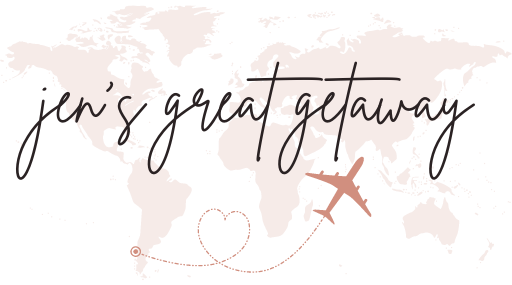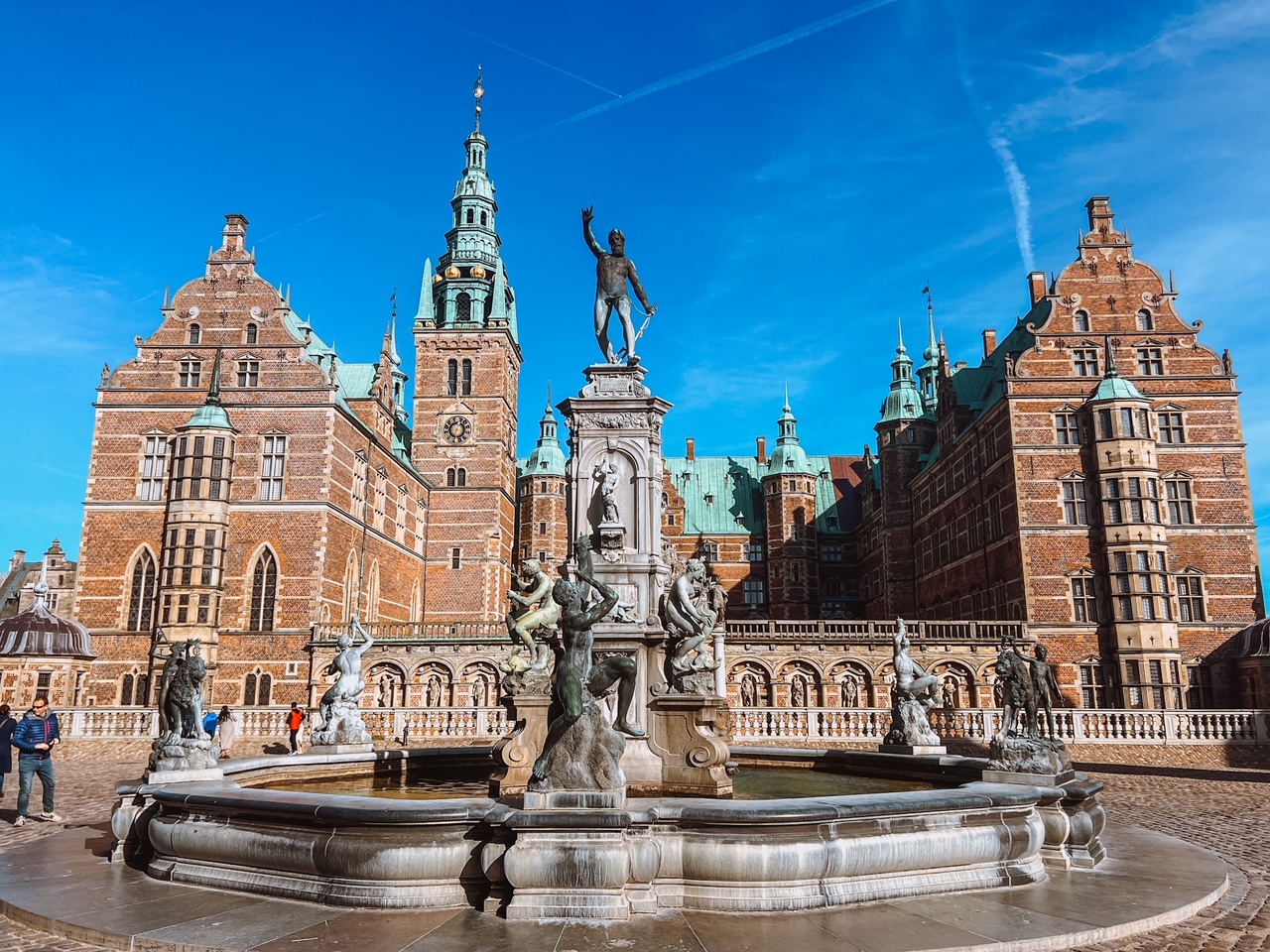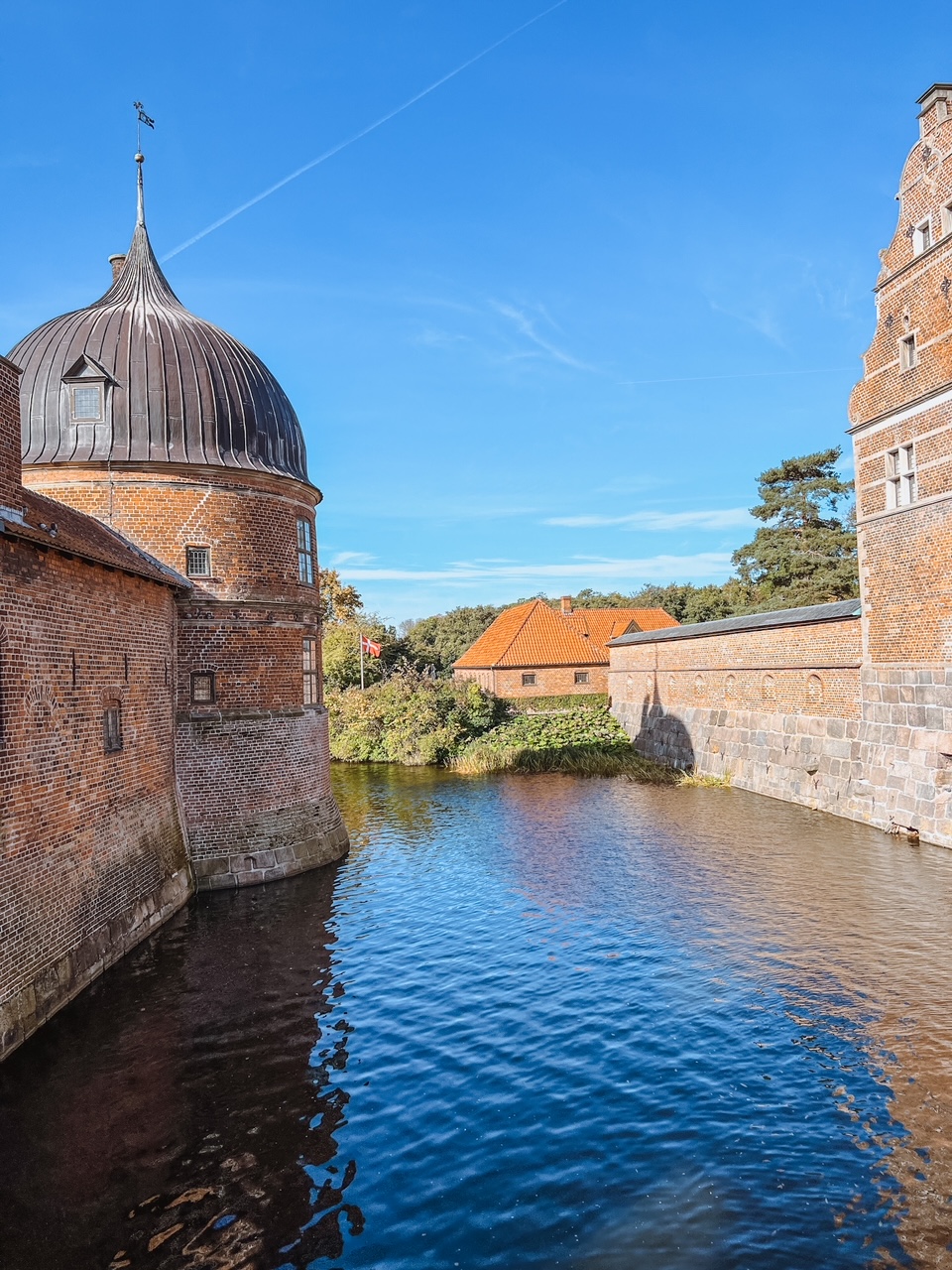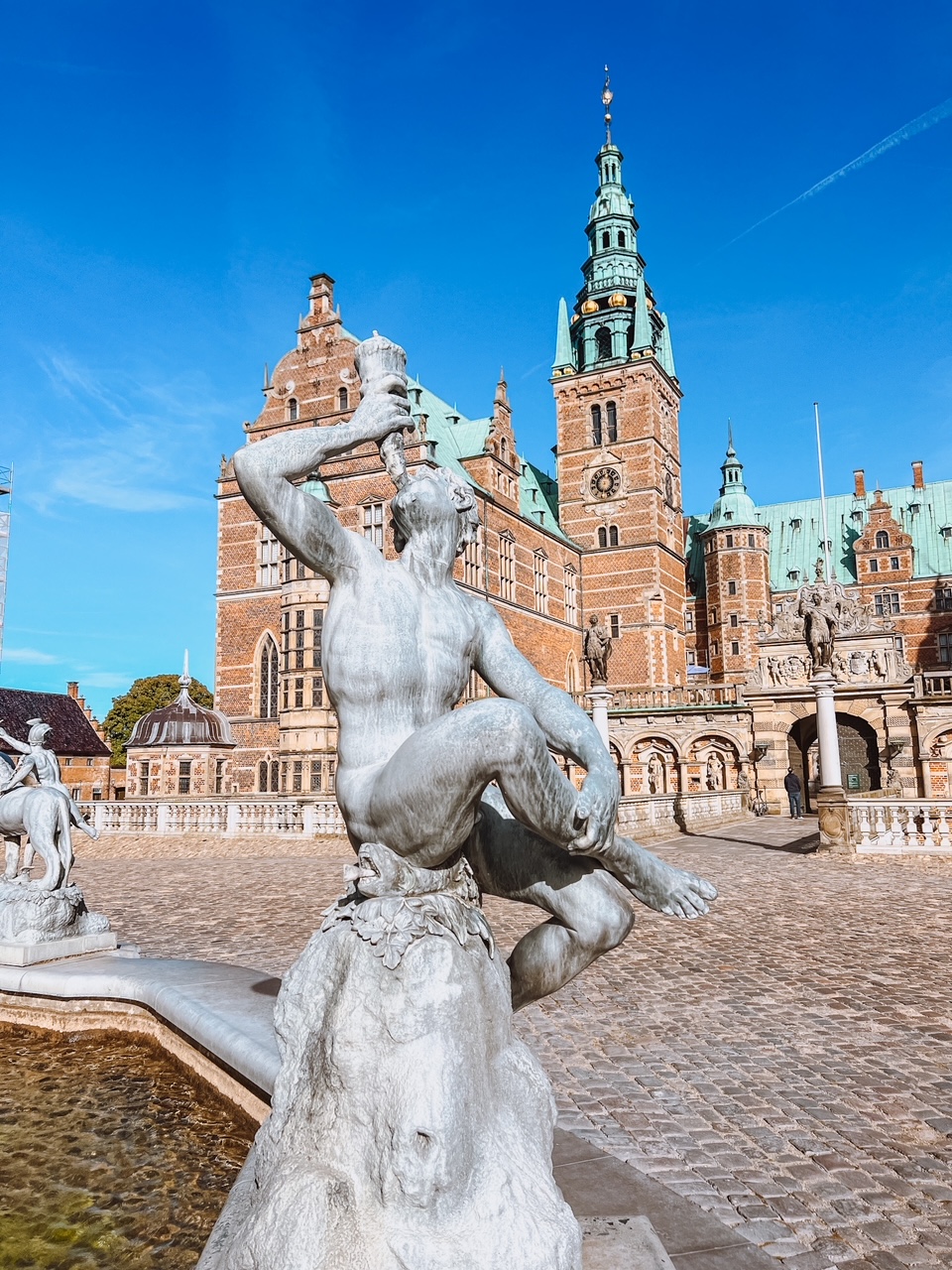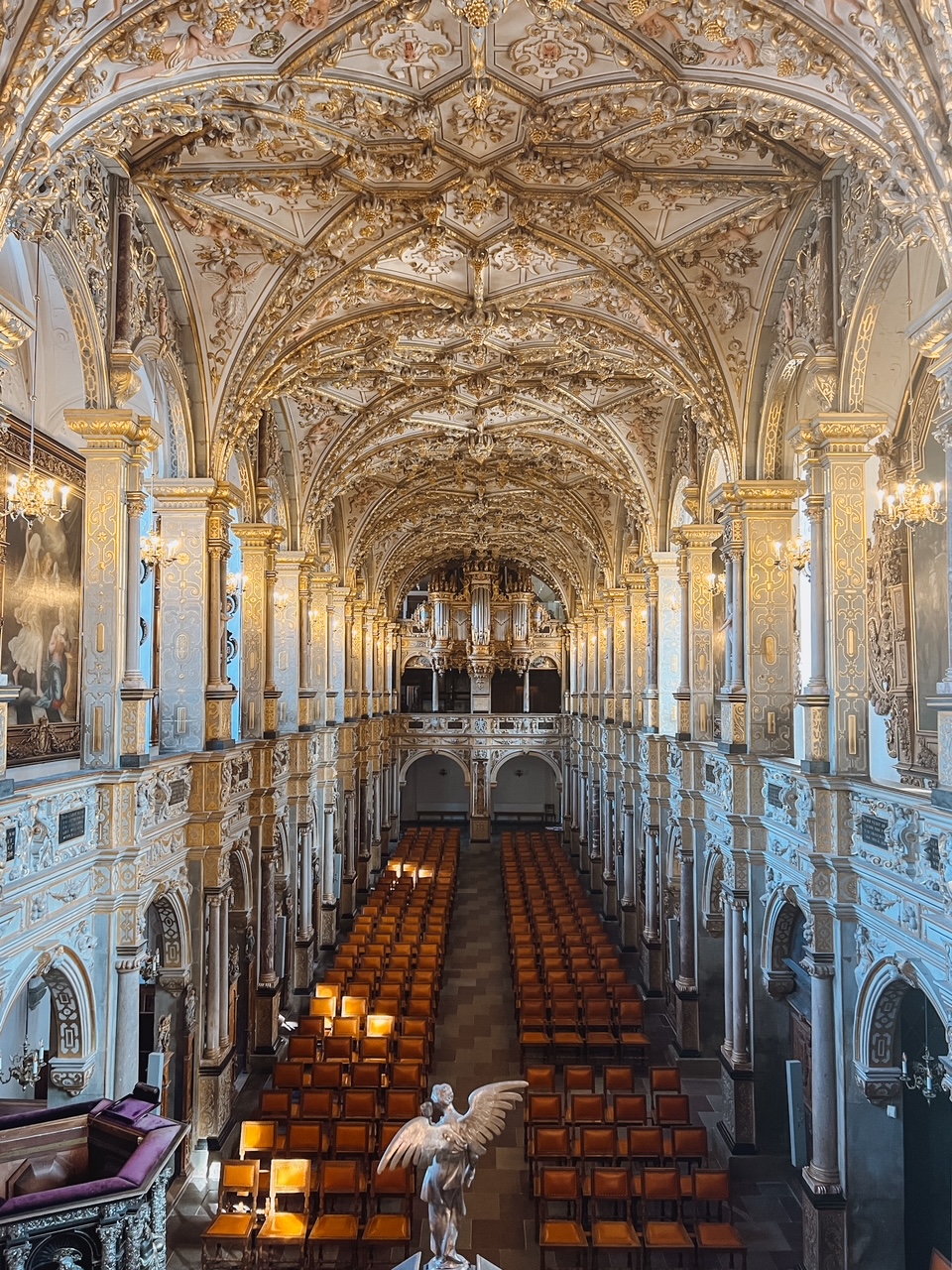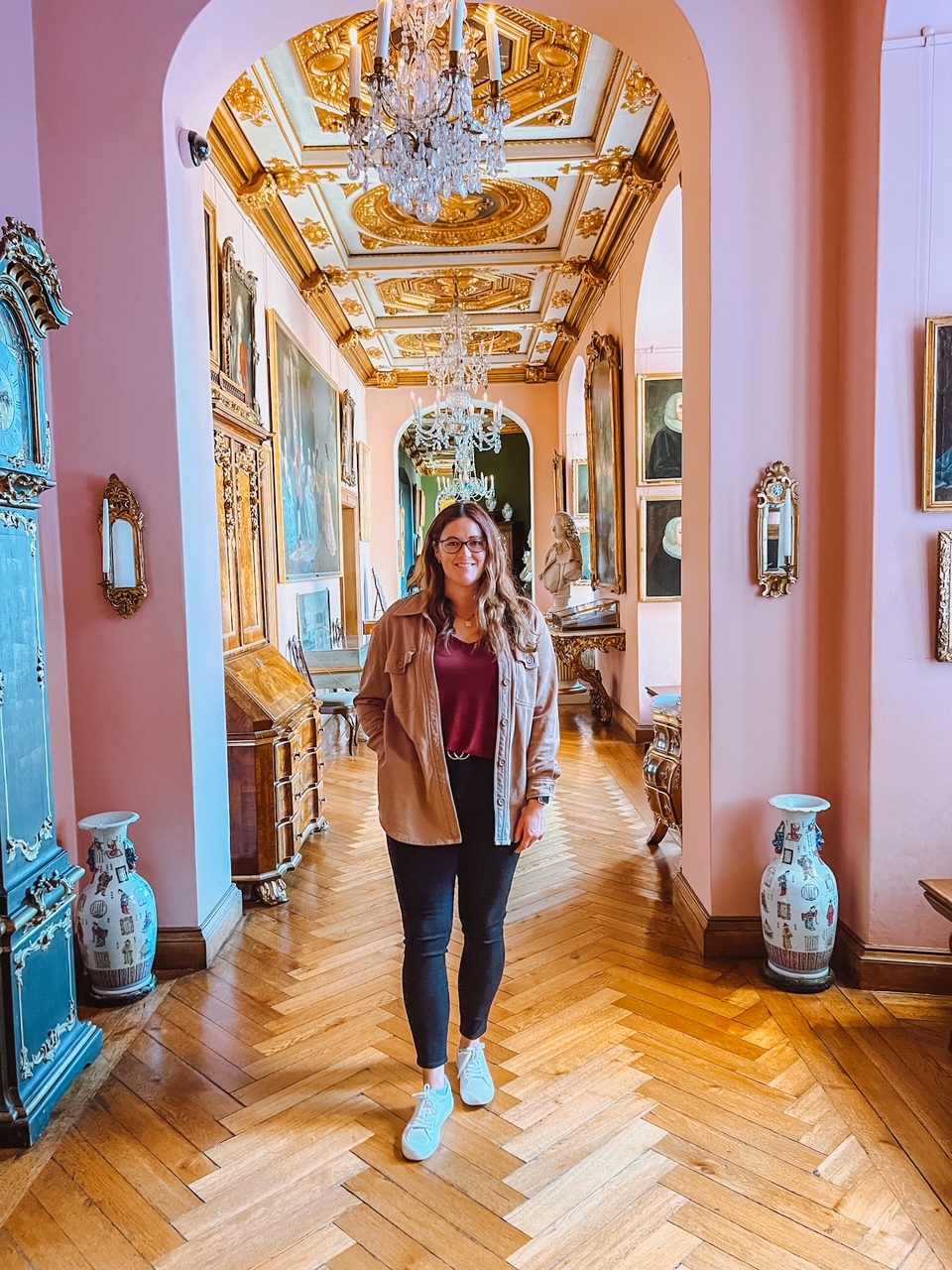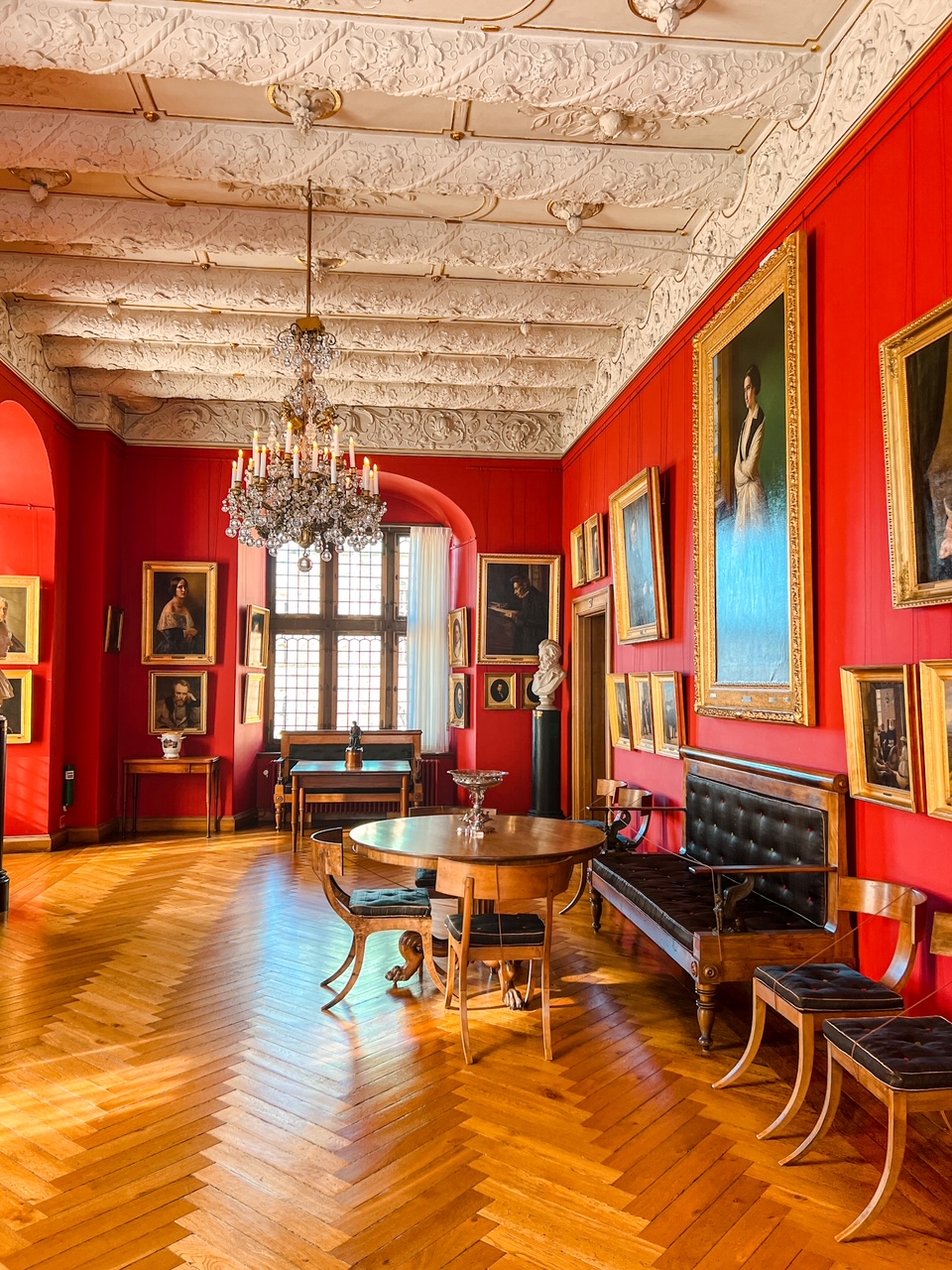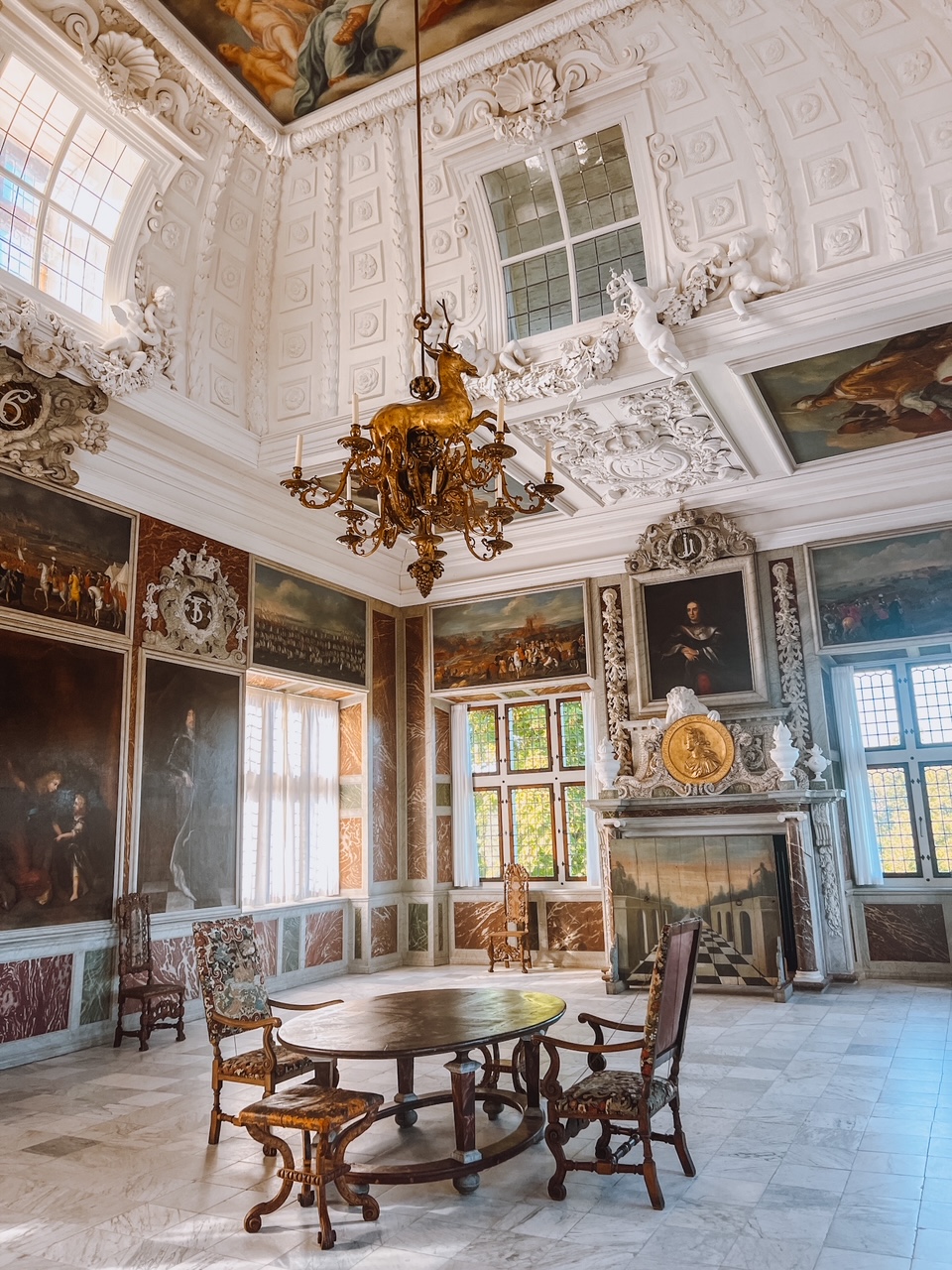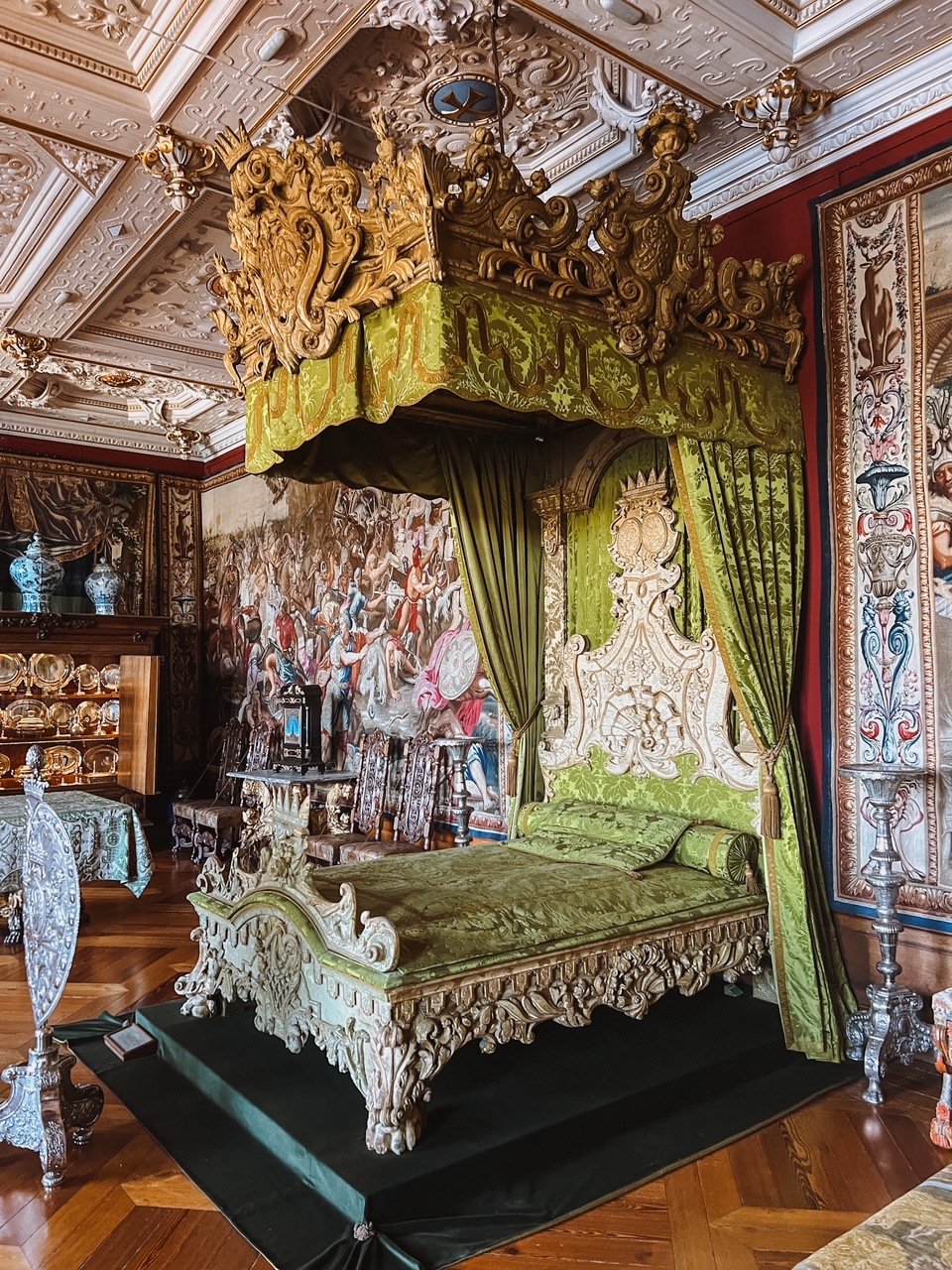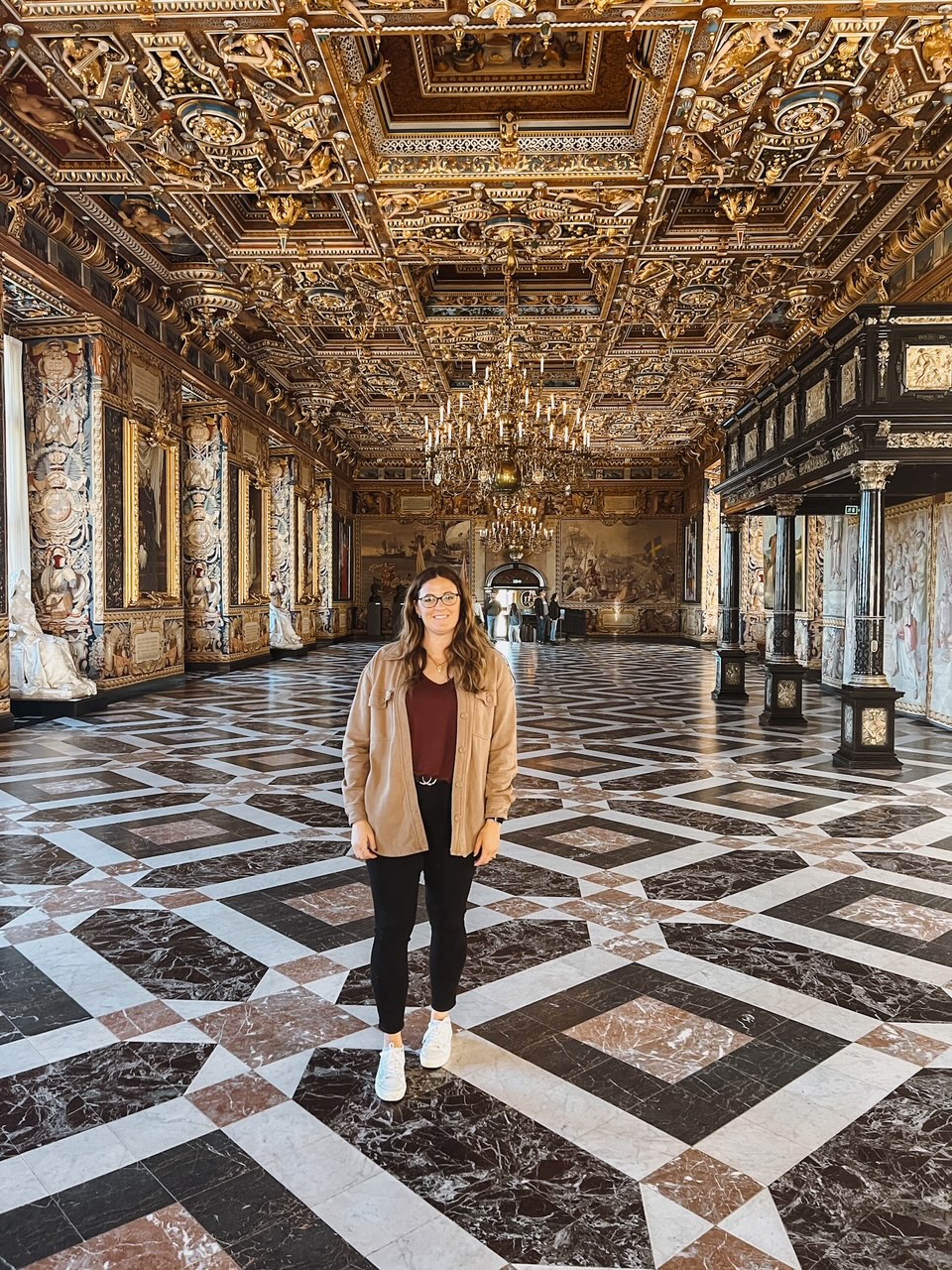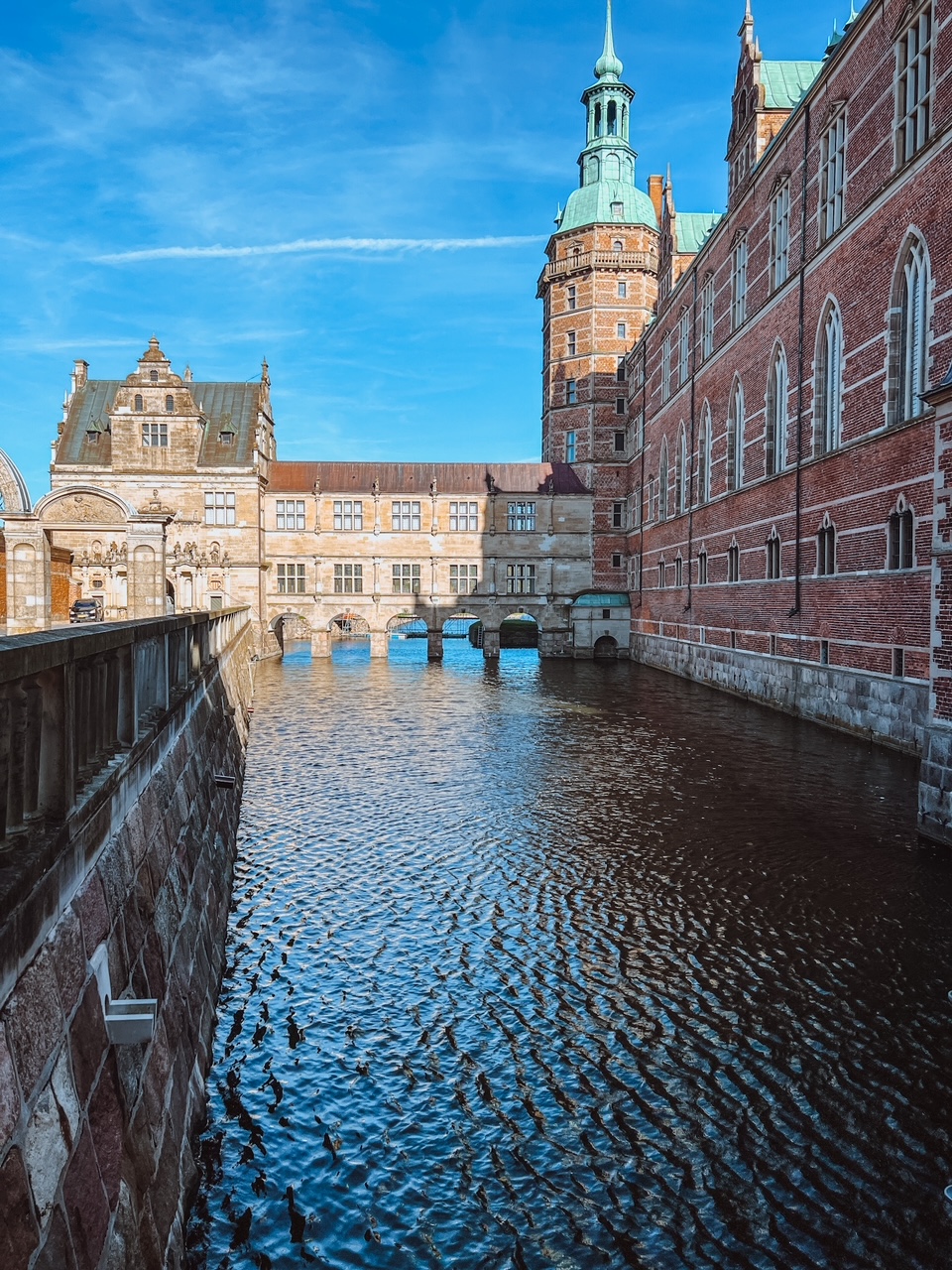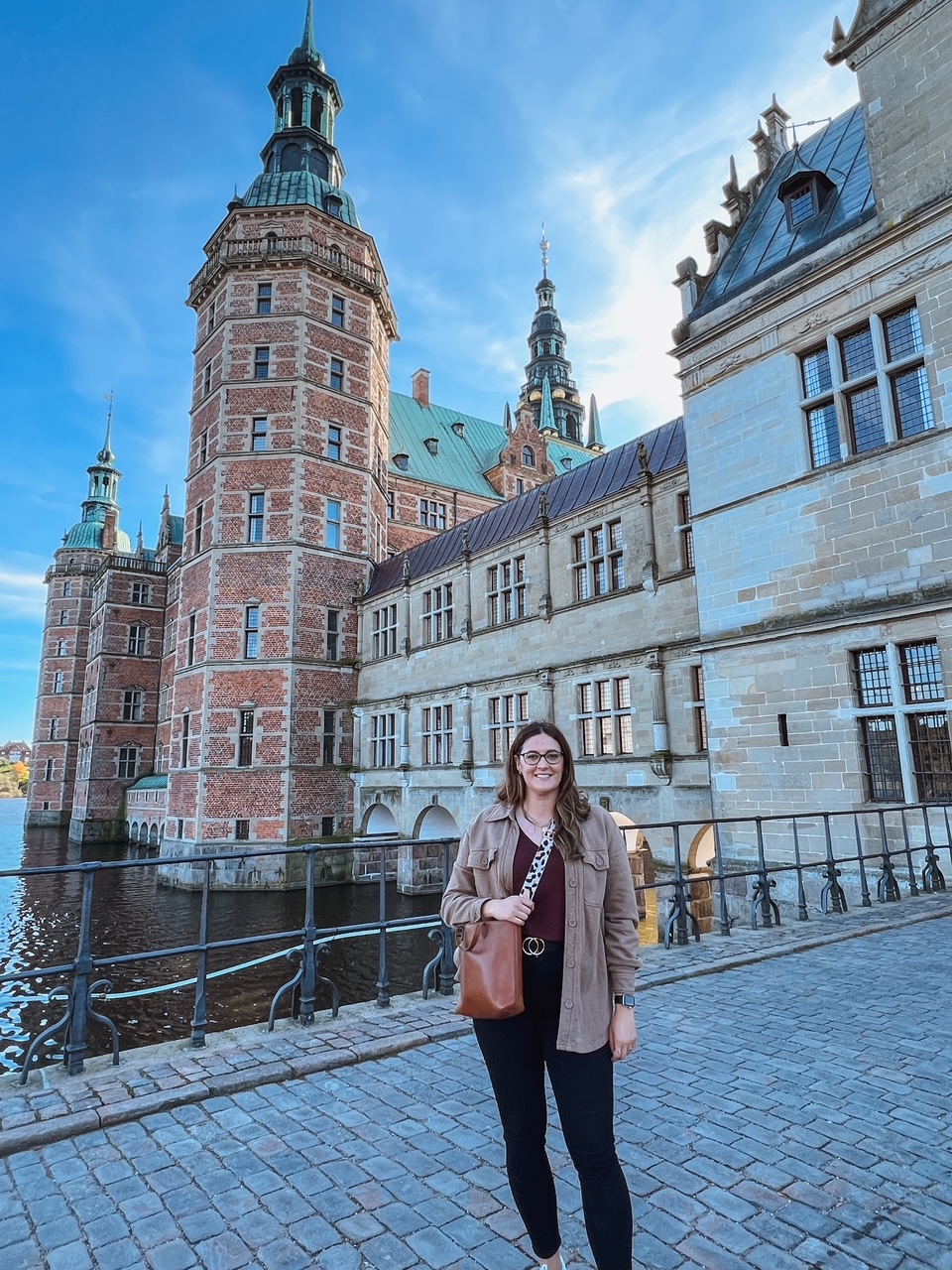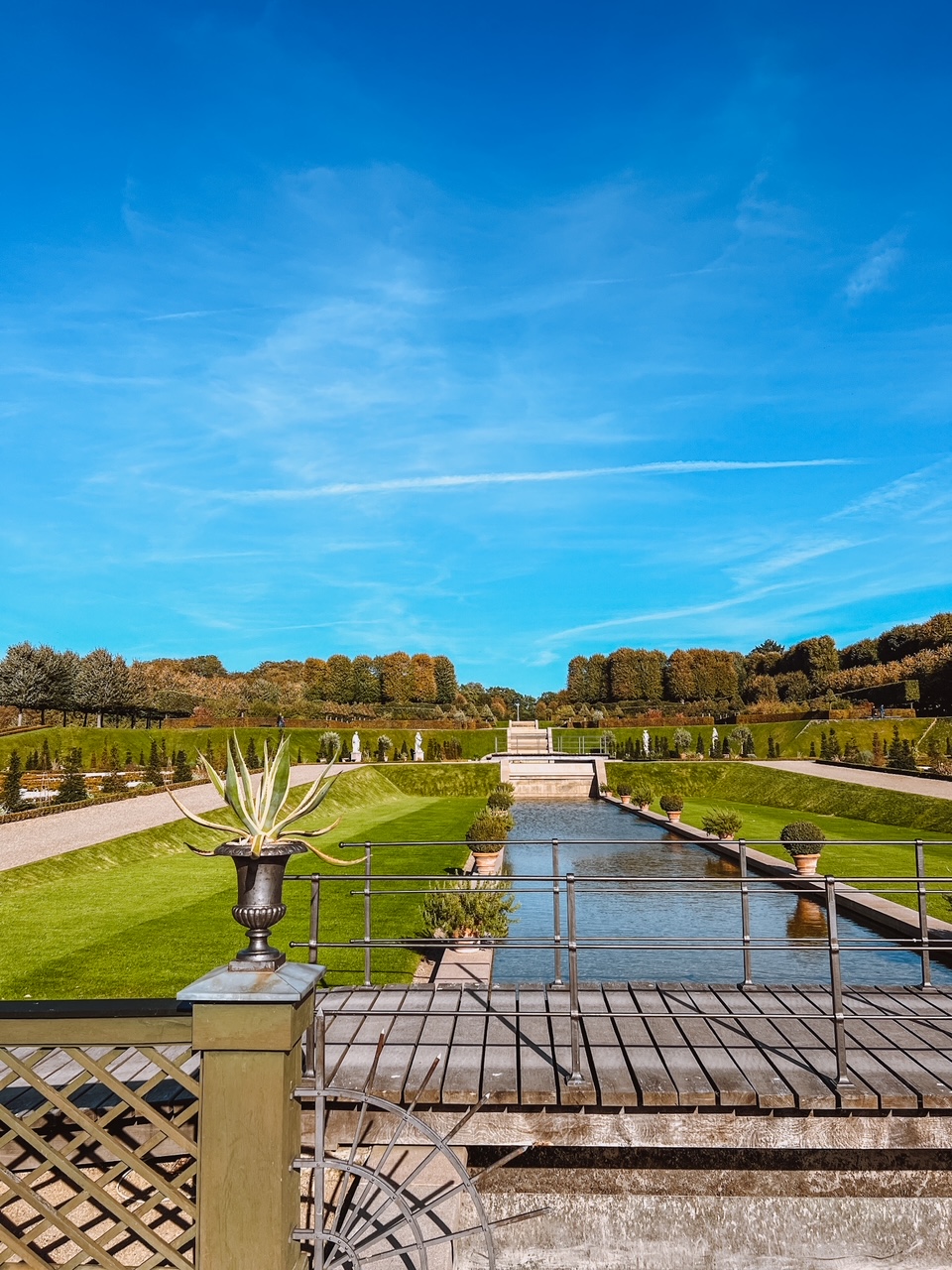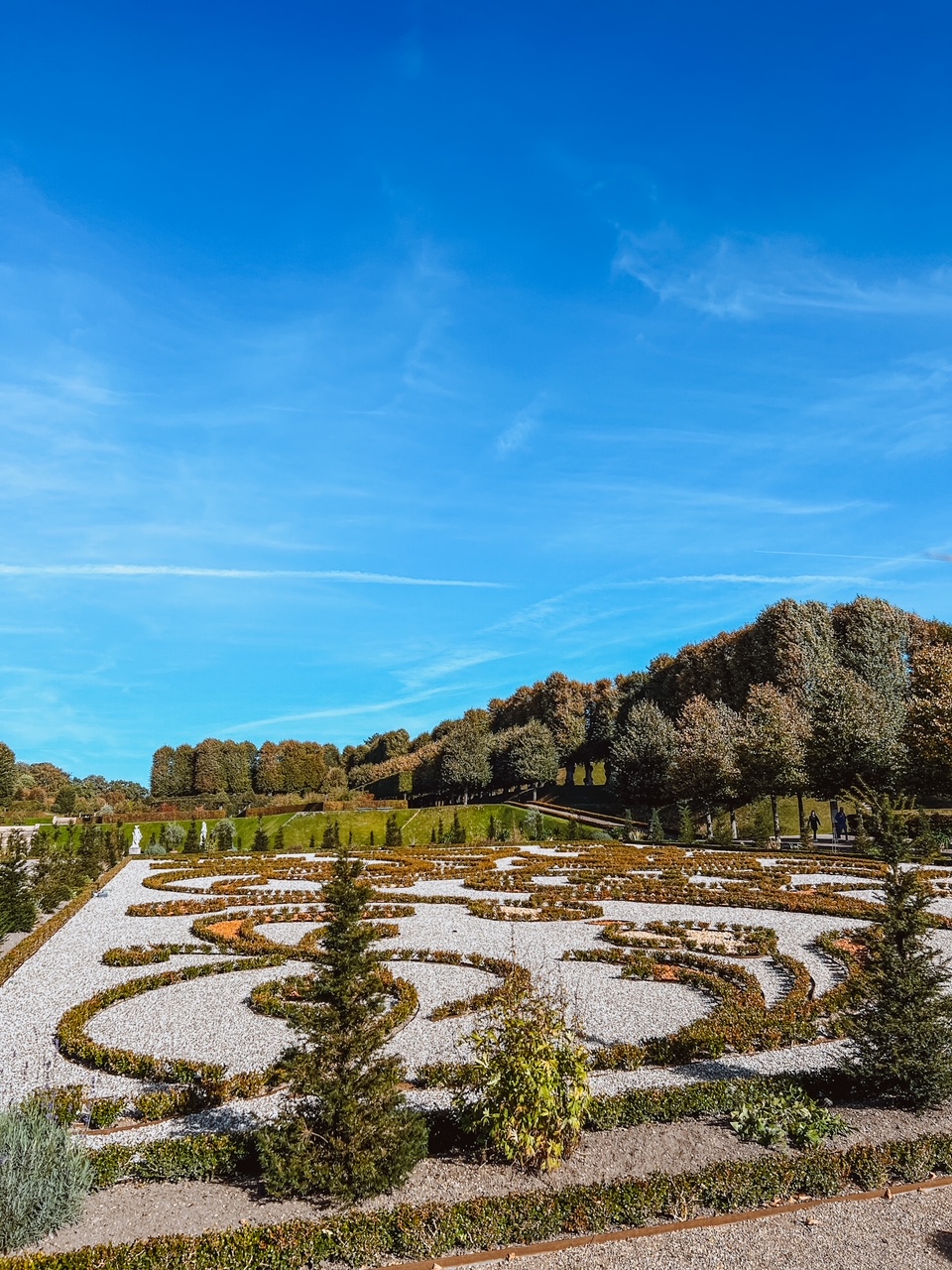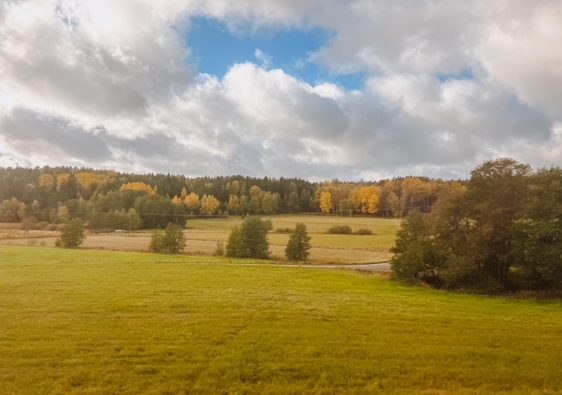Located just 40 minutes from Copenhagen, Frederiksborg Castle makes for a great day trip. The castle complex sits on three islets in the town of Hillerød. Frederiksborg Castle was built in the early 17th century by King Christian IV, however, a fire destroyed most of the interior in 1859. Fortunately, the castle chapel and audience room were spared and what you see are the original rooms. The castle was rebuilt by J. C. Jacobsen and now houses the Museum of National History.
How to get to Frederiksborg Castle
Getting to the castle is not difficult. Take the S-train (line A) to Hillerød Station. You can either walk to the castle through the streets of Hillerød, or you catch one of the local buses (301 towards Ullerød or 302 towards Sophienlund) to the Frederiksborg Slot stop. The train ride is included the Copenhagen Card so all we had to do was show the conductor our app and he scanned it. I read somewhere that the 7-Eleven at the Hillerød Station was a good place to buy snacks and drinks and that was correct. We grabbed a sandwich to eat while we walked the 20 minutes to the castle.
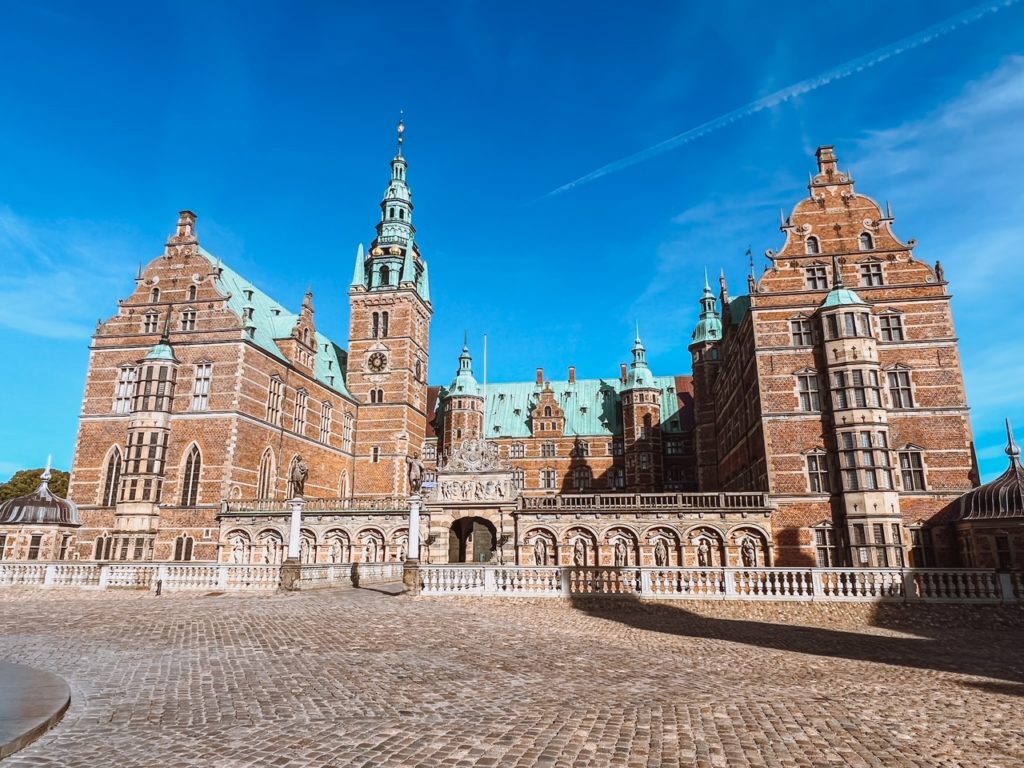
How to Buy Tickets
You can buy tickets online for 110 DKK (about $16 USD) and free for children 18 and under. You can also buy your tickets at the castle. We had the Copenhagen Card which meant staff scanned our app and we were good to go. If you visit the castle on a Thursday, you can listen to the Compenius Organ in the chapel from 13:30-14:00.
The Neptune fountain that you can see from the castle courtyard is actually a copy of the original. The original was created in 1620 but was later dismantled by Swedish troops in 1658 and taken for war reparations. The original now stands in the gardens at Drottningholm Palace in near Stockholm.
As you can see, every room is as stunning as the next. My favorite part of the castle is the Princess Wing. It’s a long pastel pink hallway with various rooms attached. Every detail of the castle is stunning.
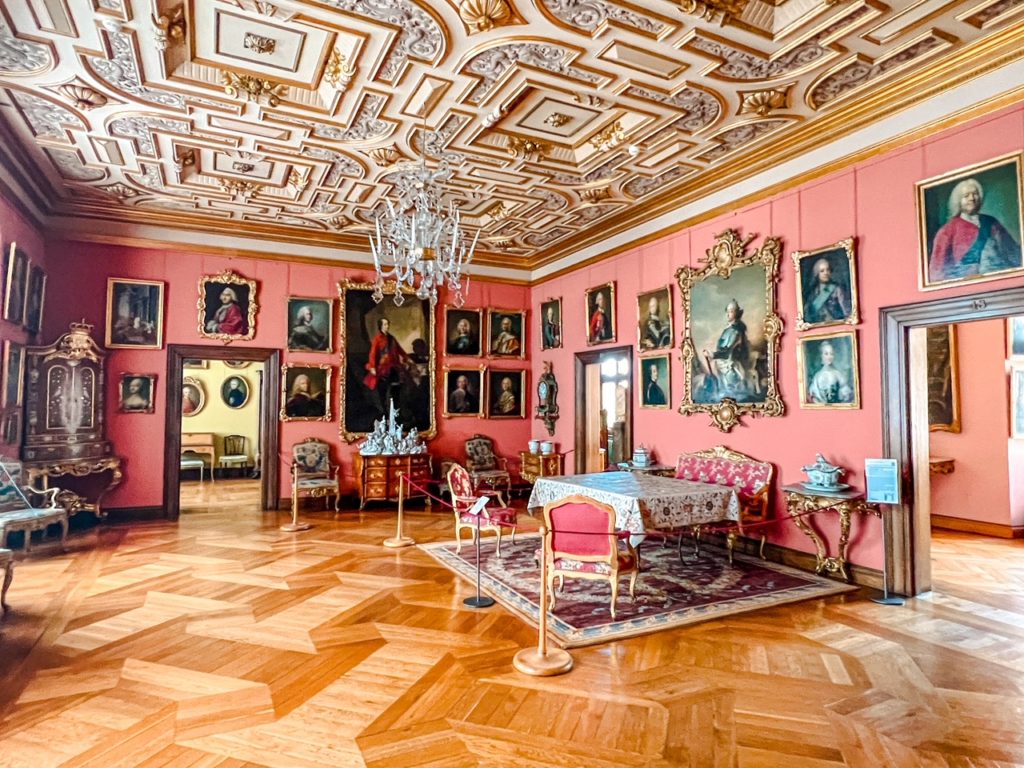
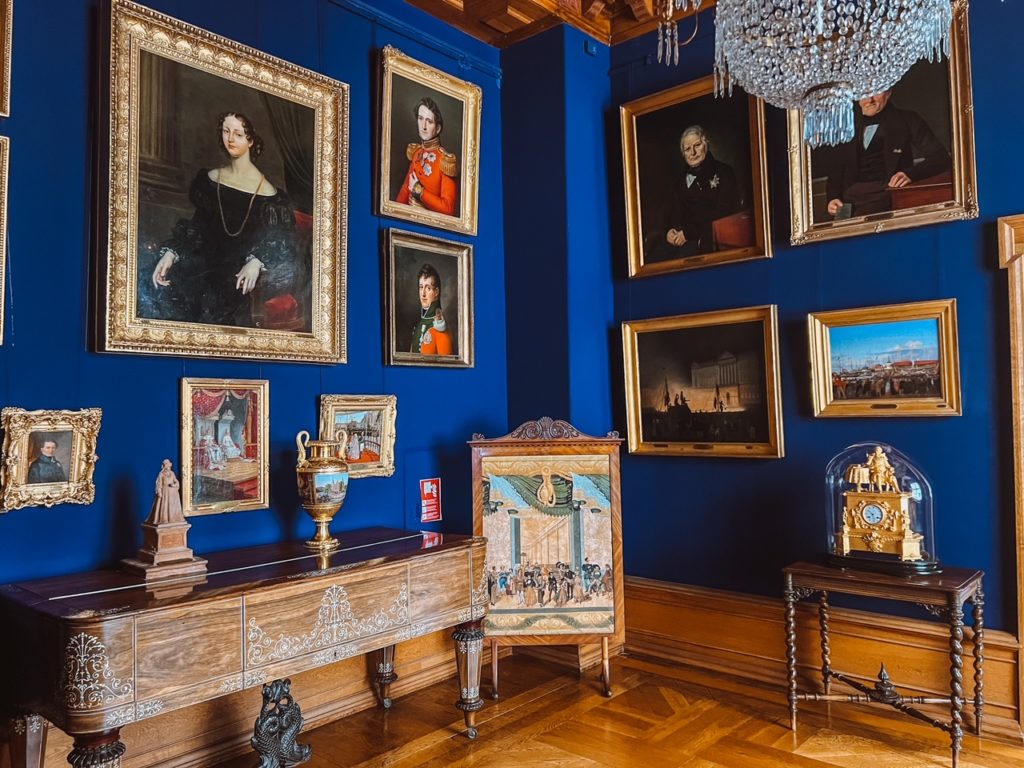
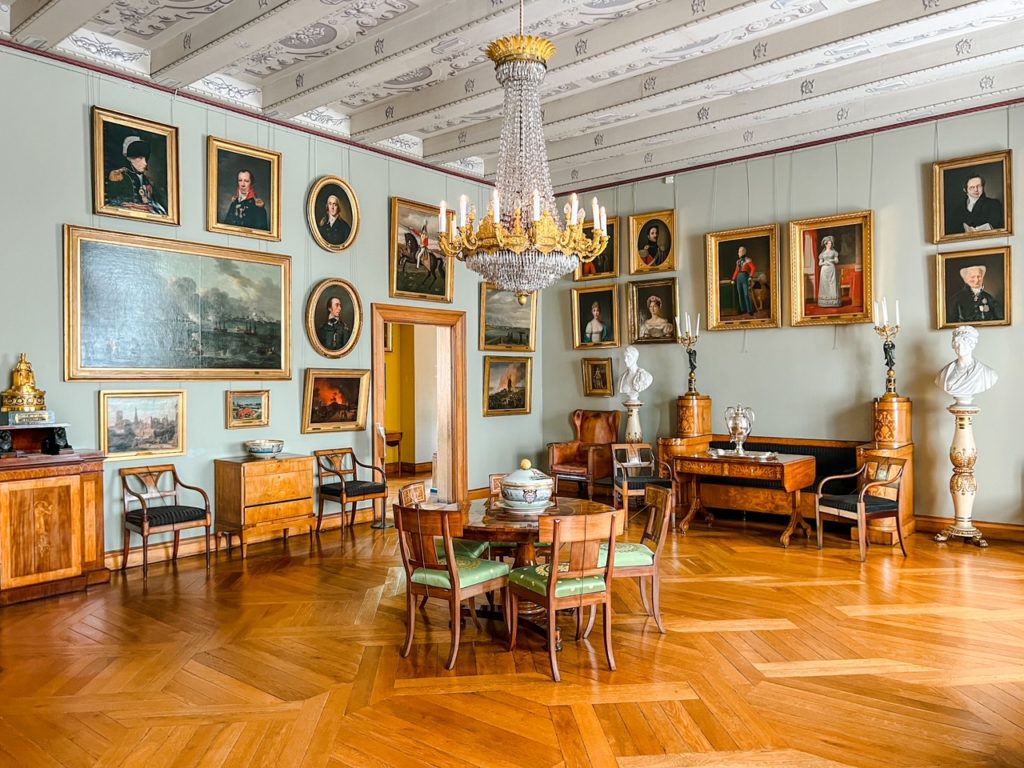
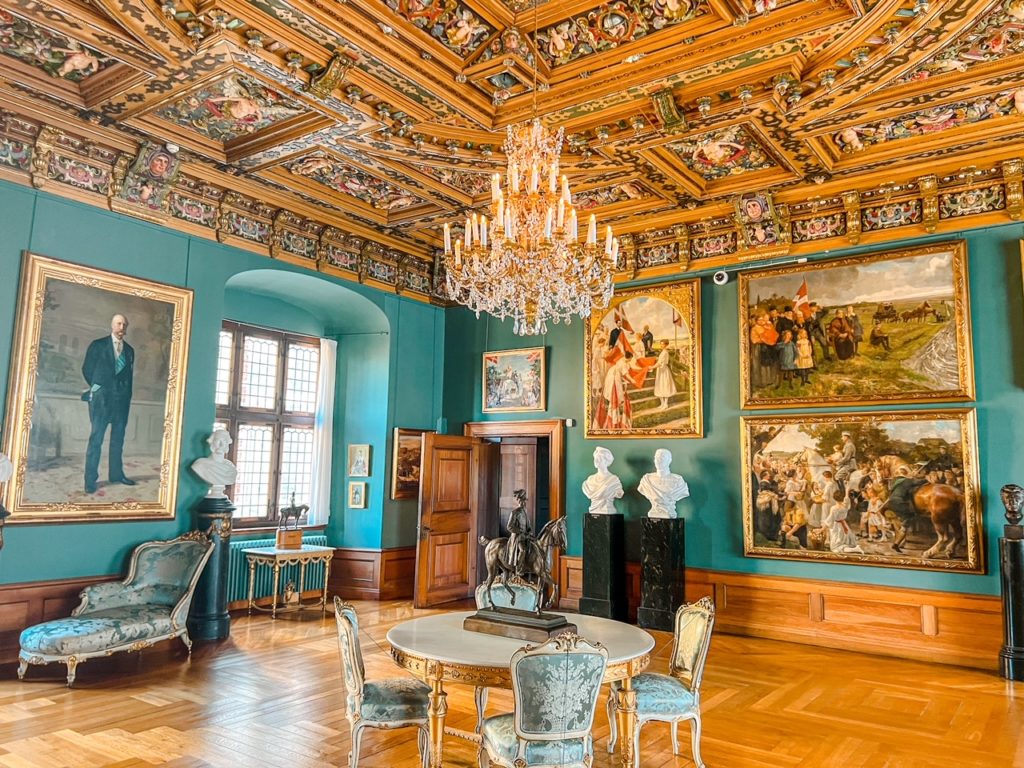
After touring the inside of the castle we made our way outside. Walk through the Mønttårn Tower towards the Baroque Gardens.
The Baroque Gardens to the east of the castle were designed by the court gardener, Johan Cornelius Krieger in the 1720s. It’s a symmetrical design with neatly laid out paths, shrubs, flowerbeds were and fountain. After looking around the gardens we made our way back to the train station on foot.



